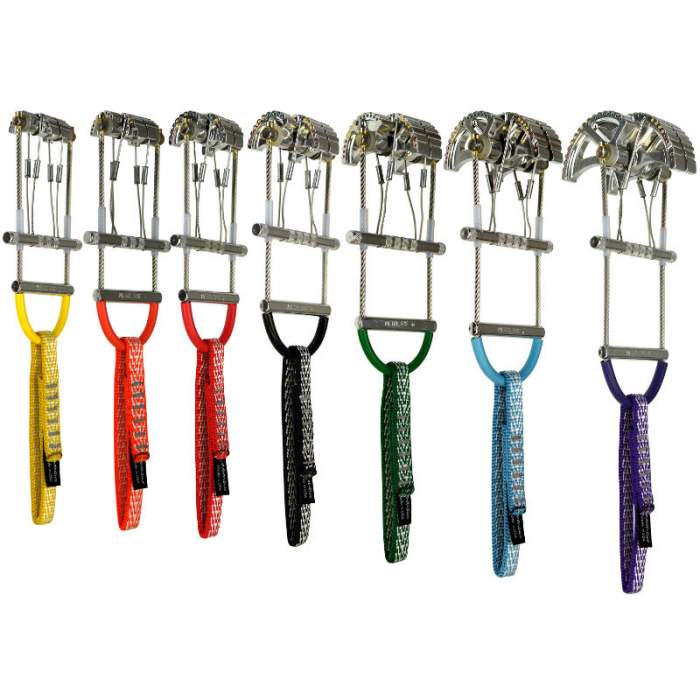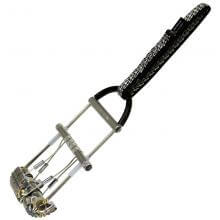How to use Metolius Cam, how cam works, lifespan, care and maintenance with instructional pictures.
Ultralight Fat Cam 7
Description
• The world's only soft-rock specific cam!
• Direct Axle Technology™ (DAT™) makes Ultralight Fat Cams up to 20% lighter!
• DAT allows for more placement options in shallow, narrow, or bottoming placements
• DAT makes tricky placements easier due to better cam lobe visibility, especially in the small sizes
• 13 mm (0.51") Monster Sling webbing (36% Dyneema/64% nylon)
• Optimized cam angle for increased holding power
• Widest cam faces available for maximum grip
• U-shaped body for greater durability and unparalleled control during placement
• and retraction
• Machined cam stops
• Color-coded sewn slings and tubing
• CNC machined for much greater precision than stamped or extruded cams
• 6061-T6 aluminum
• Hand built, inspected and individually proof tested in Bend, Oregon
Retail price
When you click a link below and then checkout online, no matter what you buy (climbing gear or not), we get a small commission that helps us keep this site up-to-date. Thanks!
Weight (g / oz)  Weight (g / oz)In grams and ounces, the weight, as stated by the manufacturer/brand. | 136.0 g / 4.80 oz |
| Cam Head | 4 lobes, single axle |
| Offset | No offset |
| Stem | Flexible double stem |
| Sling | 11 cm x13 mm Nylon / Polyamide (single sling loop) |
| Camming Angle | 13.25° (angle is consistent throughout) |
| Active Strength | 10 kN |
Cam Range (mm / in)  Cam Range (mm / in)In millimeters and inches, the maximum dimensions of the cam lobes when shut tight and fully extended. Since the "usable" range is so debatable, all manufacturers now list the full dimensions to avoid selling themselves short. For offset cams, we'll list the max dimensions possible and then afterwards list each of lobe dimensions. | 40.5 - 57.5 mm (1.57 - 2.26 in) |
| Materials | Main Material: 6061-T6 aluminum |
| Certification | CE, UIAA |
No reviews yet.
Beth Rodden shows you how to inspect and maintain your cams.
The UIAA equipment standard provides a baseline for equipment performance in a test lab under controlled conditions on new equipment. Although these test conditions are relevant to the conditions encountered climbing, conditions encountered at the crags and the condition of the equipment are equally important. This recommendation from the UIAA member federation The British Mountaineering Council (BMC) provides vital equipment information that is NOT explicitly addressed in the standard, particularly failure modes of the equipment and recommendations for the use, inspection, maintenance, and retirement of equipment.
A pictoral representation of the UIAA-125 and EN-12276 standards for frictional anchors (which includes SLCD's [cams] and Ballnuts).














